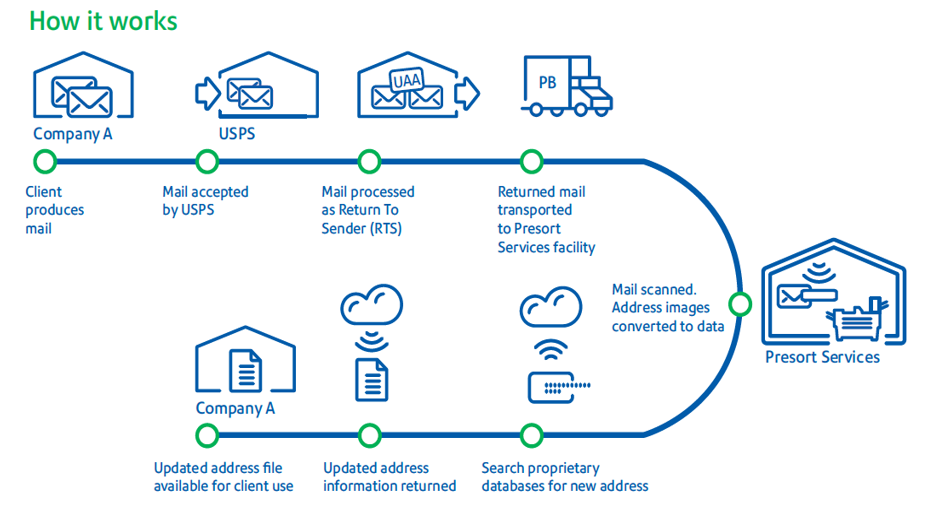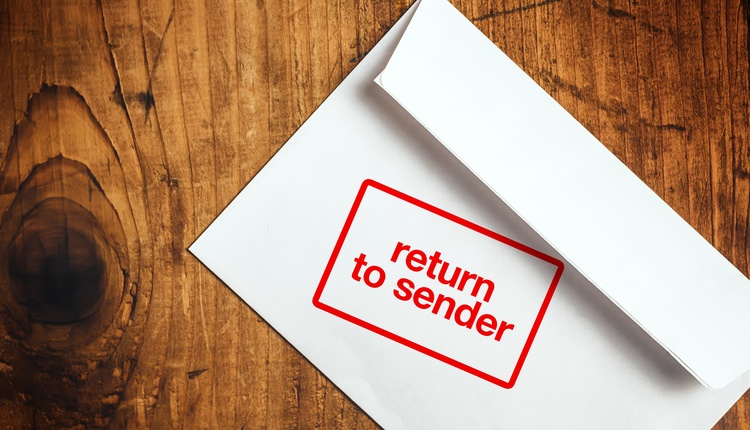Editor's Note: To view the webinar that ran on July 11 dealing with this topic, please visit our webinar page here.
In part one of this series, we covered the latest on the cost of undeliverable mail. The United States Postal Service (USPS) reports that while Undeliverable As Addressed (UAA) mail is decreasing, the cost to mailers is increasing — estimated at $20 billion per year in 2015, according to an Office of Inspector General (OIG) study. That’s three dollars per piece for operation cost, including postage and printing, handling, research, re-mailing, and related processes. But that’s not all.
When you factor in delayed and lost revenue, return mail transaction cost and the risk of non-compliance, the total cost of UAA mail climbs to an astonishing $50 per piece. And that doesn’t include the cost of the damage to the customer relationship. Today, customers expect a positive, if not delightful, experience when they interact with a business. This expectation of a good user experience (UX) now extends well beyond the retail sector, into real estate, banking, and even healthcare operations. For those organizations, a good UX delivers tangible rewards. The researchers at UserTesting report that every dollar invested in UX yields from two dollars to $100 in incremental revenue.
The significant forces driving UAA mail are:
- Approximately 16%-18% of US residents move each year, and 76% of UAA mail is directly related to moves
- Only 60% of movers file a Change of Address (COA) record with the USPS
- Strict matching logic misses moves
- Some people intentionally do not want to be found
Yet as mailers strive to reduce UAA mail, most of the low-hanging fruit has already been resolved; addressing problems are becoming more complex; and more government agencies, such as those overseeing the dissemination of health and financial information, are involving themselves in regulating address quality.
Now, we’ll cover how to turn the negative impact of returned mail into a positive one. We’ll look at solutions that turn physical returned mail into deliverable mail that positively impacts your organization. These approaches to automating and streamlining the manual process of updating addresses can improve mail deliverability by up to 60%. Compare this to internal manual processes that typically generate, at best, a 25% to 30% uplift in address data.
Step One: Get Physical Data into Electronic Format
The first step in solving the UAA mail challenge is to get the physical returned mail data into electronic format by scanning and indexing. The primary reason to convert physical return mail into electronic is to make it efficient to analyze and answer key questions, such as:
- Was this record complete, correct, and current before I mailed it?
- What was the reason it was returned?
- How many times has it been returned?
It is also important to convert physical to electronic because the information has to be stored in a format that can be accessed by different operating units within an organization. This is particularly critical for HIPAA and financial regulatory compliance.
Options for converting physical to electronic:
- In-house with an optical scanner and optical character recognition (OCR) software.
- Outsource to a mail service provider who has an established process.
- USPS Address Correction Service — ACS — for mail you’ve sent with an Intelligent Mail (IM) barcode. This allows mailers to retrieve and download a USPS file in electronic format containing COA’s and NIXIE’s (undeliverable records) associated with each IMb.
Step Two: Get the History
Here we’ll evaluate the different data sources and how they can be used to make good decisions. There are two main reasons to use data-centric software and services:
1. to validate information that is accurate (complete, correct, and current) in your records.
2. to enrich data with corrections, updates, and information that will help you communicate better with clients. Please note this may apply to the mailing address, but can now include location, social, and mobile information.
USPS data solutions are typically seen as validation tools, but they can also enrich your process to establish the correct mail and suppression logic. USPS solutions include CASS/DPV, NCOALink, ACS, and AEC 1&2. Using these solutions, you can:
- determine whether Pre-Mail Address Quality (AQ) has properly standardized and updated an address
- find out how many times a piece has come back
- decide how many times you have to mail to the address before suppressing it
- see if the address is correctable using third-party data, or by using other means to reach out to the customer, such as e-mail, phone or social media channels
The more points of logic you have in hand, the better the history. Getting the history closes the loop connecting the pre-mail process with the resulting physical or electronic (ACS) return.
ACS, AEC 1&2, and third-party sources can enrich undeliverable records. ACS has carrier identified information about a mail piece, so it gives you moves that have not been reported to NCOA yet. AEC 1&2 also accesses carrier knowledge. Third-party sources can include: local, state, and federal government databases; the three credit reporting agencies; and behavioral sources, such as phone, utility, student, and property records. It is critically important to work with a postal expert when using third-party data. Make sure that results from third-party sources are validated using postal data and are compared to your company’s history of communicating with your customer. By linking postal and third-party data, you can get the most out of the following overall solution workflow:

This chart illustrates everything you want a return mail solution to do:
- Take the physical mail piece, capture the image, and digitize the address label and barcode information
- Convert the image into a usable data file
- Run the data against a range of distinct data sources
- Run the data against NCOALink, searching for new and/or additional information based on the name and address combination, to reconcile name and address
- Return both First Seen and Last Seen Dates, validating the data is current
- Deliver results in a text file showing an uplift in the neighborhood of 60%-75%
When looking at an in-house solution, one should consider all the challenges: operational costs, technology resources, process knowledge, equipment expenses, process automation capabilities, manpower resources, and resources that will need to be dedicated to a UAA mail solution.
Make the in-house versus outsourcing decision after answering these five questions:
1. Is the task at hand a primary offering or service from your business?
2. Is there a competitive advantage that could be gained by doing it in-house?
3. Is this a specialized service you don’t need to handle full time?
4. Is this a commodity capability — something others can do, perhaps better and more efficiently?
5. Are the costs of the outside service lower that the time and manpower costs incurred in doing it in-house?
You should also evaluate the following automation and data analytics considerations:
- Physical mail data to digital data conversion capabilities
- Size of the digital data base
- Data security
- Data storage
- Cloud technology
- Analytical teams
Finally, as with any critical organizational decision, you should keep your objectives in mind. Reasonable goals for a return mail solution should be to:
- Reduce the amount of return mail to save money
- Store data to be able to document communication efforts for regulatory compliance
- Store address quality history to improve your mail/suppression logic
- Validate the performance of your pre-mail address quality solutions
- Enrich the customer database with new information to improve customer communications
- Reduce the risk of investing in a solution that manages return mail without reducing it
The good news is, even as return mail’s overall impact is increasing, more effective solutions are emerging. This makes it worthwhile for you to address the problem now, with renewed vigor.
Jeff Stangle is Director of Enterprise Innovation, Pitney Bowes Innovation Team. He has 17 years of experience in the mailing industry developing and implementing address quality and return mail solutions. Jeff helps customers leverage data to improve mail communications. By using the right data points, mailers can know when communications will be delivered, who will receive them, and where. Jeff uses a LEAN Six Sigma approach to develop new addressing solutions that validate and enrich customer information, increasing the deliverability and value of mail. Jeff has an MBA from Loyola University of Chicago and is certified as a Six Sigma Black Belt.











